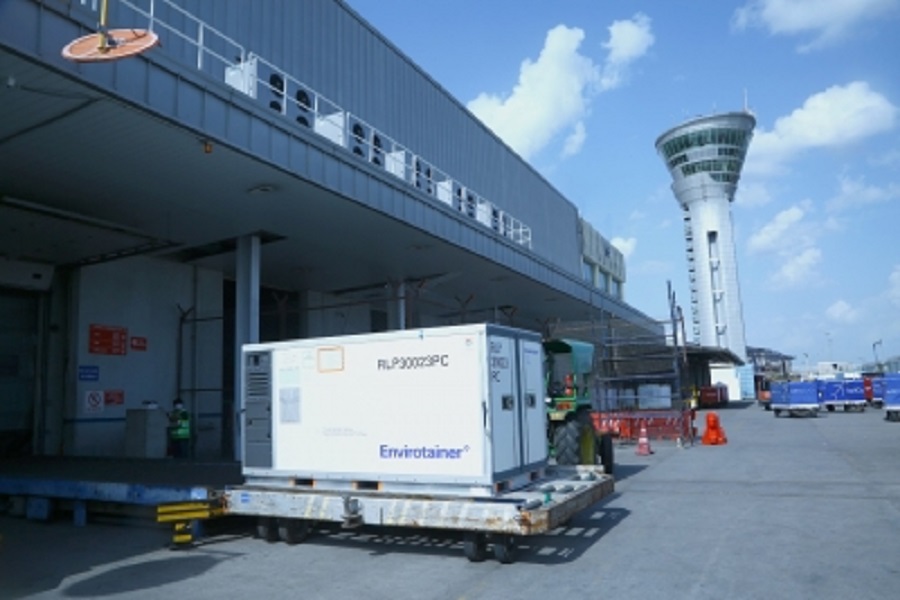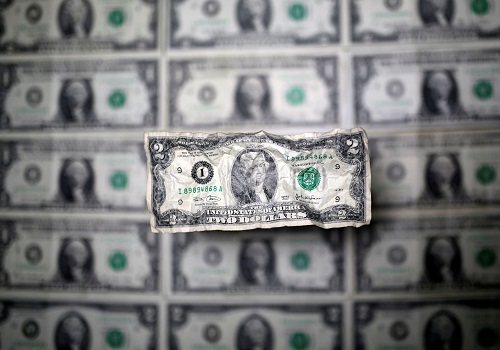Gold trading range for the day is 76810-79420 - Kedia Advisory

Gold
Gold prices fell by 1.07%, settling at 77,812 due to profit booking and a stronger U.S. dollar. The dollar index climbed above 104.4, its highest level since late July, as investors reassessed the likelihood of aggressive Federal Reserve rate cuts and prepared for the upcoming U.S. presidential election. Recent U.S. economic data pointed to continued expansion and job creation, diminishing the odds of a rate cut in November. However, traders still anticipate an 89% chance of a quarter-point cut, according to the CME FedWatch tool. This uncertainty, coupled with the approaching U.S. elections, has driven demand for safe-haven assets like gold. Expectations of looser monetary policies from major central banks, including recent rate cuts by the ECB and the People's Bank of China, continue to support gold prices. However, strong U.S. data has dampened the outlook for a more dovish Federal Reserve stance. In the physical market, Indian gold dealers offered discounts of up to $8 per ounce due to record-high prices ahead of a key festival, while discounts in China narrowed, reflecting reduced demand amid high prices and economic slowdown. From a technical perspective, the market witnessed long liquidation, with open interest decreasing by 3.49% to settle at 14,501 contracts. Gold is currently receiving support at 77,310, with the next key support level at 76,810. On the upside, resistance is expected at 78,615, and a break above this level could lead to prices testing 79,420. The technical indicators suggest a cautious outlook, with traders closely monitoring key support and resistance levels for short-term market direction.
Trading Ideas:
* Gold trading range for the day is 76810-79420.
* Gold dropped on profit booking as the dollar index rose above 104.4, hitting its highest levels since late July.
* Traders see 89% chance of a 25 bps US rate cut in November
* Investors are closely watching developments in the Middle East as tensions flared
Silver
Silver prices declined by 3.01% to settle at 96,960 as investors engaged in profit booking amid expectations of a slower pace of interest rate cuts worldwide. The shift in outlook is most prominent in the U.S., where the Federal Reserve is now projected to take a more gradual approach to rate reductions. Despite the recent rally driven by safe-haven demand due to ongoing Middle East tensions and U.S. election uncertainty, profit-taking set in as traders reassessed the Fed's rate cut trajectory. Geopolitical factors, particularly the close race between Donald Trump and Kamala Harris in U.S. polls, have added to market uncertainty, with a potential Trump victory being viewed as a risk to global stability. Additionally, industrial demand for silver has surged due to its critical role in solar panel production, raising concerns of supply shortages as the world accelerates its transition to cleaner energy sources. India's silver imports are on track to nearly double this year, driven by demand from the solar and electronics sectors, and investors seeking better returns compared to gold. In the first half of 2024, India imported 4,554 tons of silver, a significant increase from 560 tons a year earlier, reflecting rising demand and depleted inventories. Technically, the market is under long liquidation with a 13.89% drop in open interest, settling at 24,118 contracts. Silver prices fell by 3,012 rupees, with support now at 95,610. A break below this could see a test of 94,265 levels. On the upside, resistance is expected at 99,190, and a move above this level could lead to prices testing 101,425.
Trading Ideas:
* Silver trading range for the day is 94265-101425.
* Silver dropped on profit booking as investors see interest rates around the world falling at a slower pace.
* Existing home sales in the US fell 1% from the previous month.
* The global shift towards cleaner energy has also significantly increased industrial demand for silver.
Crudeoil
Crude oil prices fell by 1.06%, settling at 5,976, driven by a larger-than-expected rise in U.S. crude stockpiles and ongoing concerns about global demand. U.S. crude inventories rose by 5.474 million barrels for the week ending October 18, 2024, far exceeding market expectations of a 0.7 million increase, according to the EIA Petroleum Status Report. This rise in stockpiles was accompanied by a smaller-than-expected decline in gasoline inventories, which increased by 0.878 million barrels, compared to forecasts of a 1.6 million-barrel drop. On the other hand, distillate stockpiles fell by 1.14 million barrels, slightly below expectations. Meanwhile, diplomatic efforts in the Middle East are being monitored closely as tensions in Gaza and Lebanon persist. China's stimulus measures have lent some support to oil prices, but concerns about long-term demand and a potential global surplus weigh on the market. China has set a higher crude oil import quota for non-state-owned firms for 2025, reflecting an increase in refining capacity. From a technical perspective, the market experienced long liquidation, with open interest declining by 2.77% to settle at 13,941 contracts. Crude oil is currently receiving support at 5,912, with the next key support level at 5,848. On the upside, resistance is likely at 6,045, and a break above this level could lead to prices testing 6,114. The technical indicators suggest continued volatility, with traders focusing on key support and resistance levels amid the backdrop of inventory data and geopolitical risks.
Trading Ideas:
* Crudeoil trading range for the day is 5848-6114.
* Crude oil fell due to a larger-than-expected increase in US stockpiles.
* Crude oil inventories in the US rose by 5.474 million barrels in the week ended October 18, 2024
* API data showed US crude inventories increased by 1.6 million barrels, more than double the forecasted 0.7 million
Naturalgas
Natural gas prices edged down by 0.1% to settle at 194.5 as forecasts of warmer-than-normal weather through early November are expected to limit demand for heating. Additionally, the amount of gas flowing to liquefied natural gas (LNG) export plants has declined slightly this week, further weighing on prices. However, the decline in gas output has capped further price drops, with average production in the Lower 48 U.S. states slipping to 101.5 billion cubic feet per day (bcfd) in October, down from 101.8 bcfd in September and well below the record 105.5 bcfd seen in December 2023. Despite warmer weather, gas demand is forecasted to rise from 96.0 bcfd this week to 100.2 bcfd next week, as cooler conditions approach. LNG exports have averaged 13.1 bcfd in October, an increase from 12.7 bcfd in September, highlighting the sustained global demand for U.S. LNG as supply disruptions and geopolitical tensions continue to affect global energy markets. According to the U.S. Energy Information Administration (EIA), natural gas production in 2024 is expected to ease to 103.5 bcfd, down from a record 103.8 bcfd in 2023, while domestic gas consumption is projected to rise to 90.1 bcfd, setting a new record. U.S. natural gas storage reached 3.075 trillion cubic feet, 3% above last year's levels and 4.6% higher than the five-year average. Technically, the market is under long liquidation, with open interest dropping by 17.68% to settle at 24,765 contracts. Natural gas prices declined by 0.2 rupees, finding support at 190.5. A break below this level could test 186.4, while resistance is seen at 198.2, with a potential move higher testing 201.8.
Trading Ideas:
* Naturalgas trading range for the day is 186.4-201.8.
* Natural gas eased on forecasts warmer-than-normal weather through early November would limit gas demand for heating
* The amount of gas flowing to liquefied natural gas (LNG) export plants has declined so far this week.
* Capping the price decline was a reduction in the amount of gas producers have pulled out of the ground so far this month.
Copper
Copper prices declined by 1.53%, settling at 806.35, primarily weighed down by a strengthening U.S. dollar as traders adjusted their expectations for U.S. Federal Reserve rate cuts. Despite this, copper prices continued to find support from optimism surrounding Chinese demand, fueled by recent stimulus measures. The People's Bank of China recently lowered its one- and five-year loan prime rates by 25 basis points and hinted at further easing, including potential reserve requirement cuts before year-end, aimed at bolstering economic growth. In terms of supply and demand, the shift toward cleaner energy has raised concerns about potential copper shortages, as miners are struggling to ramp up production. Meanwhile, China's refined copper production in September rose by 0.4% year-on-year to 1.14 million metric tons, while its imports of unwrought copper in September increased by 15.4% month-on-month, reflecting improved seasonal demand and a positive consumption outlook. However, despite this increase, the import figures remained close to those from September 2023. On the global front, the refined copper market posted a surplus of 54,000 metric tons in August, a decrease from July’s 73,000 metric tons surplus, according to the International Copper Study Group (ICSG). For the first eight months of 2024, the market registered a surplus of 535,000 metric tons. From a technical perspective, the market witnessed long liquidation, with open interest falling by 16.98% to settle at 4,752 contracts. Copper is now finding support at 800, with a further drop potentially testing 793.6 levels. Resistance is expected at 815.4, and a move above this level could push prices toward 824.4. Traders are closely watching these key support and resistance levels for short-term direction.
Trading Ideas:
* Copper trading range for the day is 793.6-824.4.
* Copper slipped weighed down by a rallying dollar as traders dialed back bets on aggressive rate cuts from Fed.
* Copper market in 54,000 metric tons surplus in Aug 2024 – ICSG
* China Sept refined copper output up 0.4% y/y at 1.14 mln tons
Zinc
Zinc prices increased by 0.31% to settle at 290.5, supported by a rise in China's refined zinc production by over 2% in September 2024, as domestic smelters ramped up output following maintenance recovery in key regions like Sichuan, Gansu, and Inner Mongolia. However, year-on-year production saw a decrease of over 8%, highlighting ongoing market challenges. Additionally, Australia's Century zinc operation declared force majeure due to fire damage, potentially exacerbating the already tight supply of zinc feedstock, which has forced many smelters to cut output this year. Global zinc supply is expected to face a significant deficit of 164,000 metric tons in 2024, reversing earlier forecasts of a surplus due to reduced output from smelters in Europe and elsewhere. The International Lead and Zinc Study Group (ILZSG) revised its projections as smelters grapple with the raw material shortage. Chinese demand for zinc is expected to rise modestly by 0.7% in 2024, reflecting zinc's exposure to the property sector struggles in the country. Meanwhile, global mined zinc production is anticipated to increase by 6.6% next year, aided by restarts and delayed ramp-ups of mines like Ozernoye in Russia. Technically, the market is experiencing short covering, with a significant 24.41% drop in open interest to 1,400 contracts. Zinc prices rose by 0.9 rupees, with support at 287.5. A break below this could test 284.5, while resistance is seen at 293.1, and a move above this level could push prices to 295.7.
Trading Ideas:
* Zinc trading range for the day is 284.5-295.7.
* Zinc prices dropped as China's refined zinc production in September increased by over 2% MoM.
* Australia's Century zinc operation has declared force majeure after a fire damaged its piping equipment.
* The Chinese government increased the loan quota for eligible property developers through commercial banks in its latest round of support measures.
Aluminium
Aluminium prices rose by 0.44%, settling at 240.6, driven by alumina shortages that spurred systematic buying from funds. Alumina prices in China have surged by 17% this month due to supply disruptions in Australia and Guinea, which increased input costs for aluminium production. This led to more aluminium buying by commodity trading advisors (CTAs), largely influenced by automated trading programs. Additionally, LME data revealed significant futures positions, with a large buying interest for December and selling interest for January. On the global front, the International Monetary Fund (IMF) lowered its 2025 global growth forecast to 3.2%, warning of risks such as geopolitical conflicts and trade protectionism. However, central banks were commended for managing inflation without causing recessions. Meanwhile, global primary aluminium output in September rose by 1.3% year-on-year to 6.007 million metric tons, according to the International Aluminium Institute (IAI). China's aluminium production grew by 1.2% in September, reaching 3.65 million tons, as demand remained firm and producers enjoyed profitable margins. Daily output in China averaged 121,667 tons, higher than the 120,322 tons in August. Strong industrial production and retail sales figures for September also contributed to the positive outlook for aluminium demand in China. Technically, the market saw short covering, with open interest dropping by 16.45% to 1,214 contracts. Aluminium prices are currently supported at 238.5, with the next key support level at 236.3. On the upside, resistance is expected at 242.1, and a break above this could lead to prices testing 243.5. Traders are closely watching these key levels as the market continues to react to supply and demand dynamics.
Trading Ideas:
* Aluminium trading range for the day is 236.3-243.5.
* Aluminium prices rose as news of alumina shortages triggered systematic buying from funds.
* Prices of alumina, have rallied 17% in China this month due to upstream disruptions in Australia and Guinea.
* LME data showed one large futures position at more than 40% of open interest to buy aluminium in December
Cottoncandy
Cotton candy prices fell by 0.61%, settling at 56,920, as weak demand in the yarn markets and payment constraints weighed on the market. The USDA has reduced India's cotton production forecast for the 2024-25 season to 30.72 million bales, with ending stocks also lowered to 12.38 million bales due to crop damage from excessive rainfall and pest issues. Global cotton production estimates, however, have been raised by over 200,000 bales, with increases in China, Brazil, and Argentina offsetting reductions in the U.S. and Spain. India's cotton production is projected to fall by 7.4% from the previous year, with acreage down by 9% and farmers in key regions like Gujarat shifting to other crops like groundnuts for better returns. India’s cotton demand is expected to remain steady at 31.3 million bales in 2024/25, while exports are forecast to fall to 1.8 million bales, down from 2.85 million bales last year. This reduction in production will likely lead to increased imports, projected to rise to 2.5 million bales. On the global front, U.S. cotton production is expected to be lower due to damage from Hurricane Helene, while global trade is projected to decrease by 500,000 bales, largely driven by reduced Chinese imports. From a technical standpoint, the market is under fresh selling pressure, with open interest rising by 2.24% to settle at 137 contracts. Cotton candy prices are currently finding support at 56,880, with the next key support level at 56,840. On the upside, resistance is expected at 56,980, and a break above this could push prices toward 57,040.
Trading Ideas:
* Cottoncandy trading range for the day is 56840-57040.
* Cotton dropped as yarn markets face weak demand and payment constraints.
* India's cotton production in 2024/25 is likely to fall by 7.4% from a year ago to 30.2 million bales.
* Cotton production is projected to increase in China, Brazil, and Argentina, more than offsetting reductions in the US and Spain.
* In the global 2024/25 cotton balance sheet, beginning stocks, production and consumption are increased.
Turmeric
Turmeric prices rose by 0.21% to settle at 13,684, driven by reports of potential crop damage due to heavy rains, which could lead to higher-than-expected losses. However, the upside was limited by lower demand and an increase in arrivals, with total arrivals at 14,915 bags, down from the previous session's 16,975 bags. A sharp drop in arrivals at Sangli, where only 890 bags were reported compared to 11,000 bags in the previous session, also impacted supply. With five months remaining until the next harvest, a combination of low supply and adverse weather conditions could push prices higher in the coming weeks. However, increased sowing activity is likely to keep price gains in check. Sowing in regions like Erode has doubled compared to last year, and Maharashtra, Telangana, and Andhra Pradesh have reported a 30-35% increase in sowing. Estimates suggest turmeric acreage this year could reach 3.75 to 4 lakh hectares, up from 3 to 3.25 lakh hectares last year. Turmeric production for 2024 is expected to be 45-50 lakh bags, with an estimated upcoming crop of 70-75 lakh bags, and no carryover stock for 2025, indicating potential tightness in supply despite higher sowing. Turmeric exports from April to August 2024 dropped by 6.46%, though August saw a 5.72% rise in monthly exports. Imports during the same period surged by 340.21%, though August imports dropped 40.73% from July. Technically, the market is experiencing short covering, with open interest down by 0.6% to 12,435 contracts. Turmeric is seeing support at 13,524, with a potential test of 13,364 below. On the upside, resistance is expected at 13,820, with prices potentially testing 13,956 if resistance is breached.
Trading Ideas:
* Turmeric trading range for the day is 13364-13956.
* Turmeric prices gains amid reports of crop damage due to heavy rains.
* Turmeric exports during Apr-Aug 2024, dropped by 6.46 percent at 77,584.70 tonnes compared to Apr-Aug 2023.
* India’s festival season demand is expected to surge, particularly with CAIT forecasting 48 lakh marriages in the upcoming season.
* In Nizamabad, a major spot market, the price ended at 14025.4 Rupees gained by 0.07 percent.
Jeera
Jeera prices declined by 0.63%, settling at 25,150 due to an estimated 30% stock still available with farmers in India. However, the downside was limited by short covering and strong export demand, particularly from the Middle East. Tensions in the region over the past two months have boosted business for cumin exporters from Gujarat. Jeera arrivals are steady in Unjha, with daily arrivals ranging between 12,000 to 17,000 bags, with 60% of the supply coming from Rajasthan. Indian cumin is priced competitively compared to Chinese cumin, with export prices quoted between $3,150 and $3,200 per tonne. Countries like Pakistan and China are significant buyers of Indian cumin due to these favorable prices. Additionally, there is limited stock of cumin in Dubai and other key markets, keeping demand robust. Over the last month, 100-125 containers of cumin were traded, including 25 containers to China and 35-40 containers to Bangladesh. Cumin seed exports have surged, with shipments in July, August, and September totaling 52,022 metric tonnes, marking a 128% year-on-year increase. Exports from April to August 2024 rose by 61.44% to 103,614 tonnes compared to the same period last year. August 2024 exports reached 12,544 tonnes, an 88.53% increase from August 2023. From a technical perspective, the market saw long liquidation, with open interest dropping by 0.7% to 1,713 contracts. Jeera prices are finding support at 25,050, with the next support level at 24,950. On the upside, resistance is expected at 25,250, and a break above this could lead to prices testing 25,350.
Trading Ideas:
* Jeera trading range for the day is 24950-25350.
* Jeera dropped as it is estimated that 30 percent of cumin is still available with the farmers.
* Tensions in the Middle East has resulted in good export business from Gujarat
* The arrival of Ramzan earlier this year will increase domestic consumption.
* In Unjha, a major spot market, the price ended at 25525.15 Rupees gained by 0.05 percent.
Views express by all participants are for information & academic purpose only. Kindly read disclaimer before referring below views























